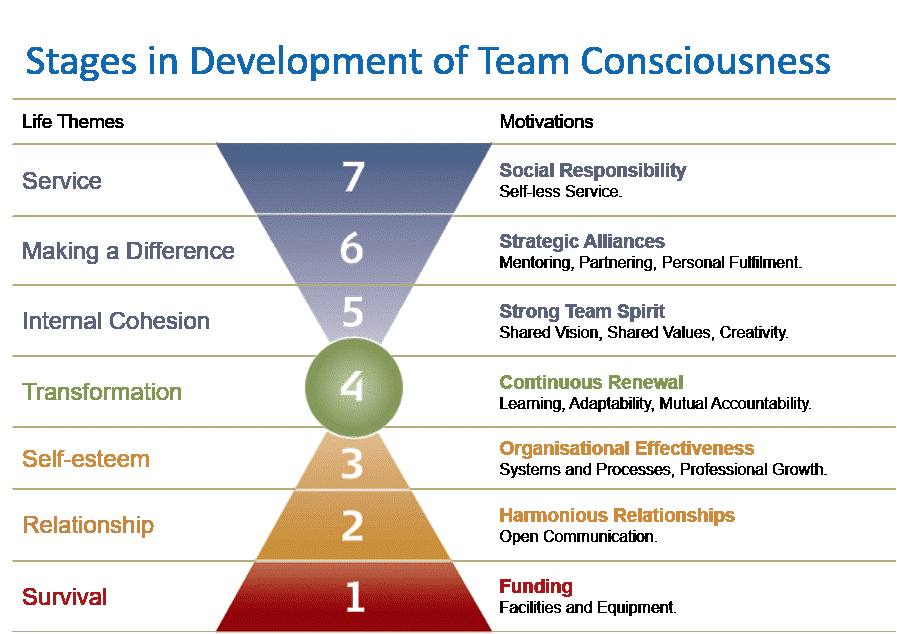Through the lens of a client case study, this post explores why we must look beneath the presenting problem in any team or organisational challenge to surface the invisible aspects of the system that are driving what we see on the surface. This is the key to unlocking previously unavailable energy in the system to drive performance and engagement and grow a healthy team culture.
I recently had a call from a small business owner in the healthcare sector whose enterprise was expanding at quite a rapid pace. He told me that one of his managers was not communicating effectively with the team and that this was causing lots of unrest and dissatisfaction.
We explored various approaches to the situation, including individual coaching for the manager in question. However there had been no previous investment in employee development in the company. I was concerned about the possibility of broader ‘invisible’ issues that might have been contributing to what was going on.
I suggested that rather than focusing on this one manager, this was a great opportunity to do an engagement survey and culture and values assessment across the business. This would help identify any such invisible components of what was playing out in the organisation’s culture. It would also take the whole team on a collaborative learning journey which would help them over the next phase of growth.
The Team Culture Assessment
The assessment we carried out used the Barrett Values Centre Team Culture Assessment along with a simple engagement survey (underpinned by our version of the Get Connected Model as a broader framework).
After these assessments, we work-shopped the results as a group. The data provided the basis for the team to come together, to learn about each other and to engage in dialogue that surfaced how people were feeling and what they were experiencing. This allowed discussion about what was working well and what was getting in the way of performance and engagement. It enabled the group to collectively discover what needed to change and how to go about that.
A significant issue raised by the data was a level of cultural entropy of 25%. Cultural entropy indicates the amount of dysfunction in the organisation system, and this level reflected significant issues requiring immediate attention.
The top collective personal values of the group included caring, honesty, fairness, respect and humour/fun. Personal values tell us what is important to people in their personal lives. This is vital data that allows you to build a culture in which people feel they belong. This group loved learning about what mattered to each other, while the opportunity to share new things about themselves built stronger connection between them all.
Another aspect of culture measured in our assessment are the current culture values. These provide a picture of how people are experiencing the team or organisation at the moment. They show us what is working well and what is undermining engagement and performance. The strengths of the current culture for this group were humour/fun and teamwork, competence, cost effectiveness and efficiency. The limiting values were blame, control and hierarchy.
Unsurprisingly, given the personal values of this group, their desired culture included fairness and honesty along with maintaining the humour/fun that already played an important role in the workplace. Values of ‘blame-free’, compassion and teamwork were also important.
Surfacing the invisible to solve the visible
All these discussions allowed us to surface the invisible forces that were contributing to the original problem: the manager who it was felt was not communicating effectively. Without directly blaming or judging any one person, we were able to engage in dialogue and facilitate personal learning towards the desired culture. Subsequent leadership coaching supported the senior leaders to deepen their personal insights into how they were contributing to the current culture and how they could make changes to their own behaviour towards that desired culture.
During this process one of the key people in the business resigned. Change happens when we engage in dialogue and set a new level of expectations, but unfortunately for some this journey is uncomfortable and they make a personal choice to leave. In my experience, when that happens it is often the best outcome for both the individual and the team.
The immediate changes that resulted from our work with this group (over a three-month period) included:
- regular team meetings were established in which people could all receive the same message
- the ISO accreditation process, which had been dependant on a key individual, was re-scoped into a team project, including participants who were front line employees
- front line employees were given new responsibilities as part of their development
- regular performance conversations were established.
Comments from some of the participants included:
‘I feel relieved that [the tensions] are out in the open and that we can now talk about the issues.’
‘I feel a closeness, a coming together, through talking and taking time with one another. It feels more like a team.’
‘I feel happy that we are getting somewhere and that it feels like a good direction.’
Culture transformation is a dynamic journey. The commitment by the leader in this case to invest in this work was a powerful step towards improving the workplace culture, as was working towards a values-based organisation. A values-based organisation builds trust, while values-based decision making is the best approach to navigating complexity and dealing with uncertainty. It makes us focus on our human needs.
Do you understand the invisible factors that driving performance, engagement and wellbeing in your team or organisation?
For more information on our culture and values assessments, visit this page or contact us?


